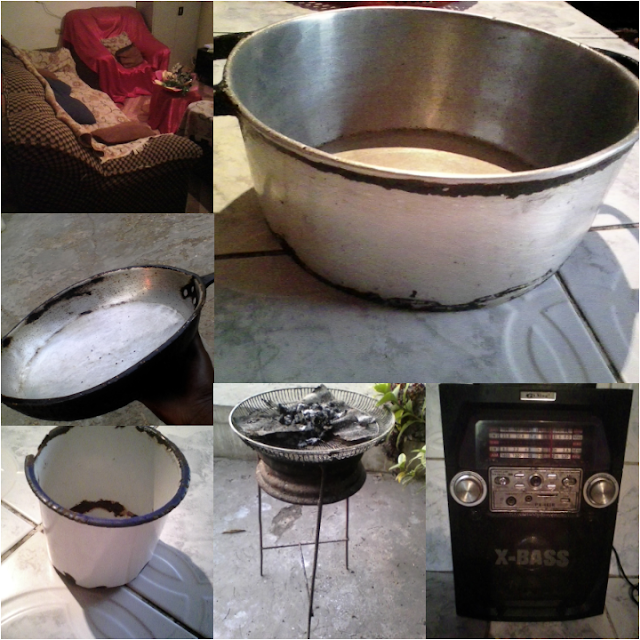Furniture scavenger hunt Challenge. By Sofonie Dala Angola
In our houses, there are treasures to be found. Pieces of furniture that are practical, stylish or even antiques! Some may have been left to us by family members, some were carefully selected in the store and some were received from friends moving into another home. Often, we have furniture that is more precious because it holds memories and associations. Caring for and maintaining these precious pieces could help us be more sustainable.
Here are some things from my childhood. Some were given to me and others belong to my family home.
This pot my mother bought in 1990 before I was born; (32 years old)
This couch my father bought in 1997 at the time we lived in another city, when we moved we took it with us; 25 years old.
This frying pan is also very old, my mother bought it in 2000, it is still in good condition to use; 22 years old
This aluminum mug has been with us since 2002, we use it to measure rice; 20 years old
This recorder my brother bought in 2004, we still use it sometimes. 18 years old.
This is also our stove, plantains, cassava, fish, sweet potatoes are grilled here.
A matryoshka (Russian: матрёшка; romanized: matrioshka) or Russian doll, is a traditional Russian toy. My Russian teacher offered it to me in 2005 when I was studying in Russia. I keep this deep in my heart, it's the only tangible memory I have of my teacher. 17 years old.
So, before buying furniture we always need to ask ourselves: “Do I really need this or can I do without?” The answer may surprise us. If we do need an item, it is worth asking first if the old item was broken and could be repaired or upgraded.

ENERGY POSITIVE HOMES
Enhance your comfort, save energy and money by adapting your home and your habits to be more efficient
The way we live
Small action, big impact
We probably leave a plug in the socket, or something on standby while it could also be switched off. On your own, the energy consumption of small things may not seem to make a difference. Yet, this has more influence than you think!
Now that you know more about sustainable housing it is time to make some more sustainable choices in your life.
Sustainable appliances at home, and behaviors such as opting for renewable energy, and even insulating our home against weather changes can dramatically reduce emissions and promote climate change mitigation.
Energy efficiency and renewables can save money, generate utility savings over time, and increase the value of property. Making our home more sustainable can also help support the local economy and can increase the level of comfort by enhancing the quality of our lives.
Click here to learn more: https://sofoniedala.blogspot.com/2021/10/energy-positive-homes-anatomy-of-action.html
We are constantly bombarded with messages to aspire for more. More money, a new car, exotic holidays, a bigger house- the bigger the better. We must pause to consider the question: What do we actually need to be happy?
Our homes have a significant environmental impact, just like the stuff, we buy to live in them comfortably. The houses and buildings in which we live offer us an opportunity to take a curious look at where we can lower our environmental footprint, for example by reducing energy leakages or choosing sustainable building materials. All these choices in and adaptations to our homes add up. Together we can reduce our overall energy consumption and adapt our homes to a sustainable way of living!









Comentários
Enviar um comentário